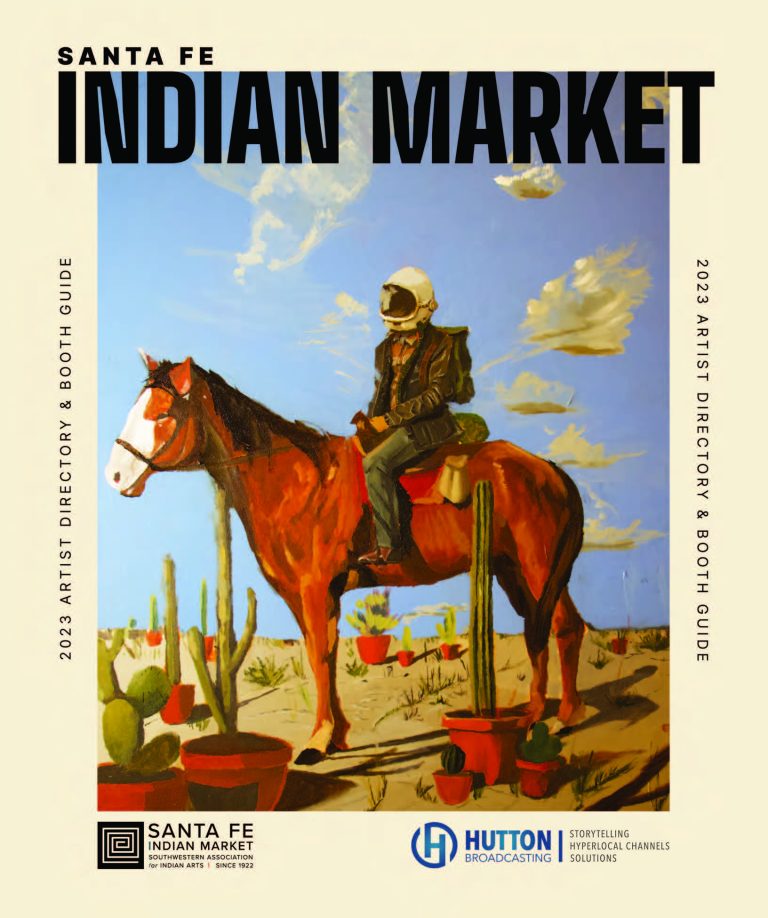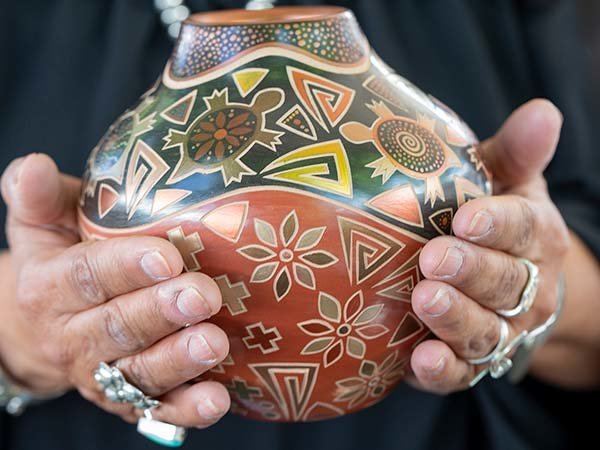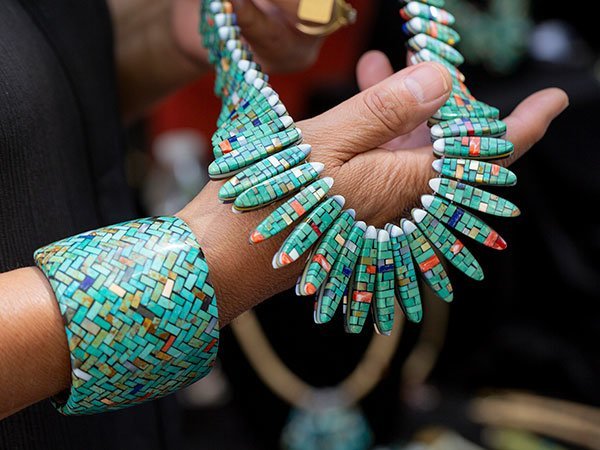
How turquoise became synonymous with New Mexico
Sacred to Indigenous people, beloved by collectors, one blue-green stone has huge cultural cachet in the “Land of Enchantment.”
by Jennifer Barger
“The natural rock is more connected to mother earth, with no middleman,” says Muskett. “The stone’s softness can affect how I cut it, but even if it breaks, I grind the turquoise up and use it in prayers.”
(Why Oaxaca, Mexico is reviving its “pottery of the night.”)
Travelers hunting for turquoise souvenirs in New Mexico and around the Southwest generally come seeking authenticity, both in materials and makers. Though the Indian Arts and Crafts Act of 1990 is meant to protect against “Santa fake” Indigenous artifacts, it’s hardly ever enforced.
There’s no central organization vetting Indigenous crafts, but shoppers can seek galleries and shops that post information about which artists from which Indigenous groups are producing their jewelry. Serious collectors turn up every August for Santa Fe’s Indian Market, which features hundreds of juried Indigenous potters, jewelers, and weavers on and around the historic main plaza.
Yet the most memorable way to purchase New Mexico turquoise might be to go straight to the vendors who set up every day outside Santa Fe’s Palace of the Governors or in the courtyard of Albuquerque’s Indian Pueblo Cultural Center. All these vetted Indigenous artists can share information on both their techniques and traditions.
“People come to New Mexico and see how natural things are interwoven into our culture, and they want a piece of that,” says Muskett. “Buying these bits of the earth for adornment might bring them peace and tranquility.”






